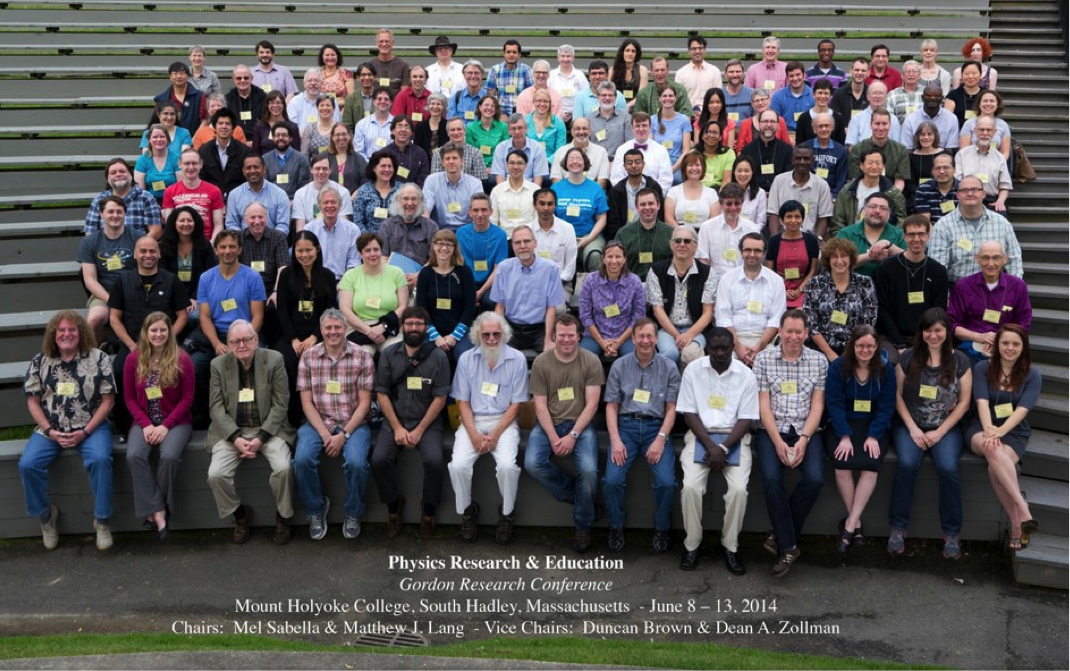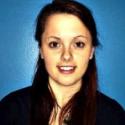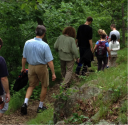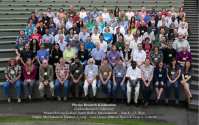Gordon Research Conference for Physics Research and Education
June 8, 2014 to June 12, 2014
South Hadley, MA
By:Mallory Tackett
SPS Chapter:

During my flight from Kansas City, Missouri, to Boston, Massachusetts, I speculated on the nature of the upcoming conference. As an undergraduate student at the University of Missouri, Kansas City (UMKC), I was only just beginning to descend into the exciting world of research and collaboration. Hoping to begin my plunge, I had come across the website for the
(GRC), which bring together researchers in the fields of physics, biology and chemistry to present and discuss their discoveries. What caught my eye the most was the GRC for Physics Research and Education – the Complex Intersection of Biology and Physics, as I am pursuing a major in physics with a minor in biology. This is in hopes of going to graduate school for computational neuroscience. I suspected that I might hear some interesting talks, meet a few people in the field, and return with some great stories to tell. What I received from the experience was that, and so much more.
The bus arrived at Mount Holyoke College in the late evening amid dreary weather. The attendees trudged to their rooms to drop off their luggage and headed to the dining hall for the first meal of the conference. Despite the exhaustion of travel, I observed life returning to the crowd as they began introducing themselves and gathering information about each other. Soon, a group of almost 150 people had enough energy in their conversation to be heard from outside, approaching the building.
After a lovely dinner we adjourned to the lecture hall where the talks for the next week would be given. The first speaker was Howard Berg, a Professor of Physics and Professor of Molecular and Cellular Biology from Harvard University. He had a less than commanding presence, lacking animation and speaking without wild gestures and quick movements. I believe that this was out of consideration for the audience, as the research that he was presenting was so riveting and thought provoking that such a performance would over-stimulate even the most intelligent of minds. When I later talked to my roommate, a physics graduate student doing very similar research to Dr. Berg's, about the presentation, she giddily proclaimed “I just wish I could sit down with him for hours and hear what he has to say!”
At the end of the first day, we socialized in a more relaxed environment. While lining up for snacks, I overheard two researchers talking about recent advancements in neuroscience, a subject which obviously fascinates me. After they had finished their conversation, I approached one of them. “Excuse me,” I said. “I'm an undergrad student wanting to go into computational neuroscience, I heard you talking about research you've conducted in that field. Can you tell me more about that?” I honestly expected to be written off with a short answer, and to be left with so many more questions. After all, I was an undergraduate student, barely into my 20's, in a room full of brilliant minds. Surprisingly, his face lit up, and he dove into a long-winded conversation about his work with EEG data analysis, understanding mammalian olfactory patterns, and the neural circuitry of vocal learning in songbirds.
One of my favorite talks was by a Texas A&M professor, Dr. Wonmuk Hwang, on his study of biological motors and filaments. To say that this individual was a Linux fan is an understatement. I was amazed by the proficiency with which he incorporated his Unix and programming skills into making intricate biological models. His talk was fast paced - but included many great pictures, models, and videos that displayed how he envisioned collagen fibers formed and motor proteins functioned. Since the conference included three meals a day, where all the attendees could line up at a buffet of gourmet food, I was able to meet with him and converse over lunch. He was a very observant and patient man, articulating all of the points that he made, while omitting extraneous details.
My conversation with Dr. Hwang was one of the many I had with other great physicists and biologists over meal-times, many of which I'll remember for many years. It was not uncommon for others, upon hearing that I was the only undergraduate at the meeting, to jump into communication with me and give me great advice on graduate programs. “You'd be a good fit for our program!” and “I know someone who's doing research you'd like to look into” were things that I heard often, and whenever I reached out for more information, they were more than happy to give it.
A great thing about the GRC conferences is that they provide leisure activities so that everyone can purge their brains from all of the dense discussions. In the middle of the week a portion of the attendees loaded up on a bus to hike or to visit the Amherst downtown area. There, I was able to witness the local flavor while spending more time with experts in my field. I had a great conversation on the bus with graduate students who were there to present posters for their research. They gave me advice on classes that I had yet to take, and described how they had started doing research and publishing papers. It was nice to speak with these students, who were standing in the same position that I will someday be in myself. I met all of these people again later at the poster session. I've only made one poster before, so being exposed to all of the new ways in which these students were presenting their research and data got me excited for possible projects.
I noticed an interesting phenomenon as the days passed. Every talk had, amongst musings of research and projects, the theme that physicists had much to learn from biologists, and vice versa. By the last day, in my conversations with grad students and professors, I increasingly heard the question “Are you a biophysicist?” This was in stark contrast with the question I usually received when I first met someone at the beginning of the week, “So, are you in physics or biology?” Instead of assuming that those attending the conference were either from a strict physical or biological discipline, the unifying themes of the talk had altered our schemata to include a blending of the two. Not only was the conference a great success for me in regards to networking, but it was also an inspiring look into the future of the integrated field of biophysics.



